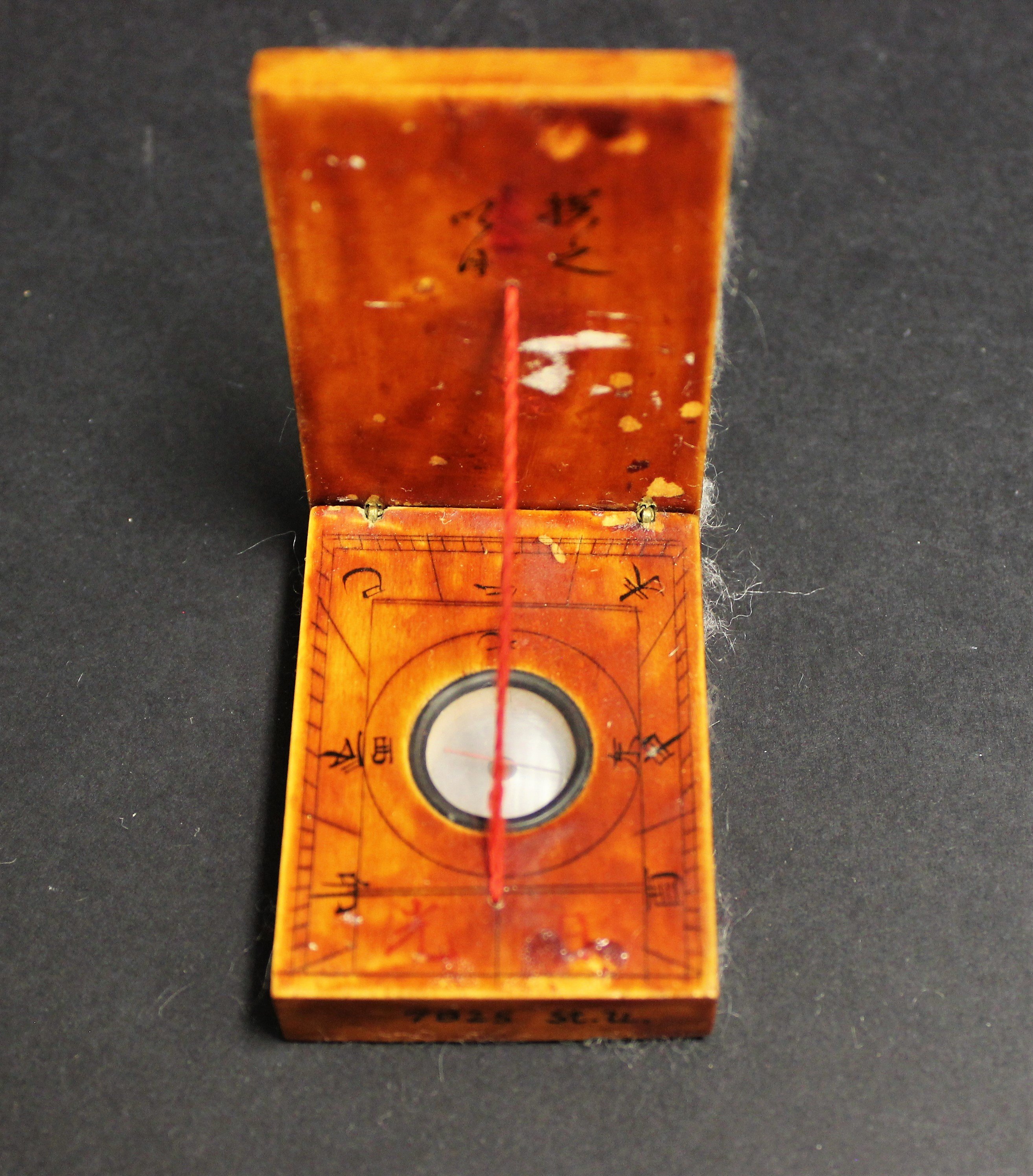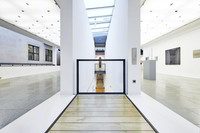A Chinese pocket sundial from wood with a compass and with red resp. black Asian characters inside and outside the cover and with a scale. A red thread is taut between cover and bottom. On the back two hinges hold both parts together. In the bottom, a circular immersion for the compass is let in. The compass consists of a red rod on a white ground and a protective glass.
Around the compass are characters and the scale for the sundial.
The sundial was a gift from the musical director Bernhard Wolter from Ulm to the Museum of the City of Ulm in 1934. Wolter himself got the object as a gift from a German soldier, who was a member of the German troops under Alfred von Waldersee that were sent to China in 1900 to defeat the Boxer Rebellion. The name of the soldier and more specified information on the acquisition of the sundial are not known. According to the inventory, the object allegedly comes from Tsingtau, nowadays Qingdao, in the former German colony Kiautschou. This specification could not be verified.
de

